My daughter Kelsey and I had our own JAWS-like experience recently – some 50 years after the filming of the iconic blockbuster movie.
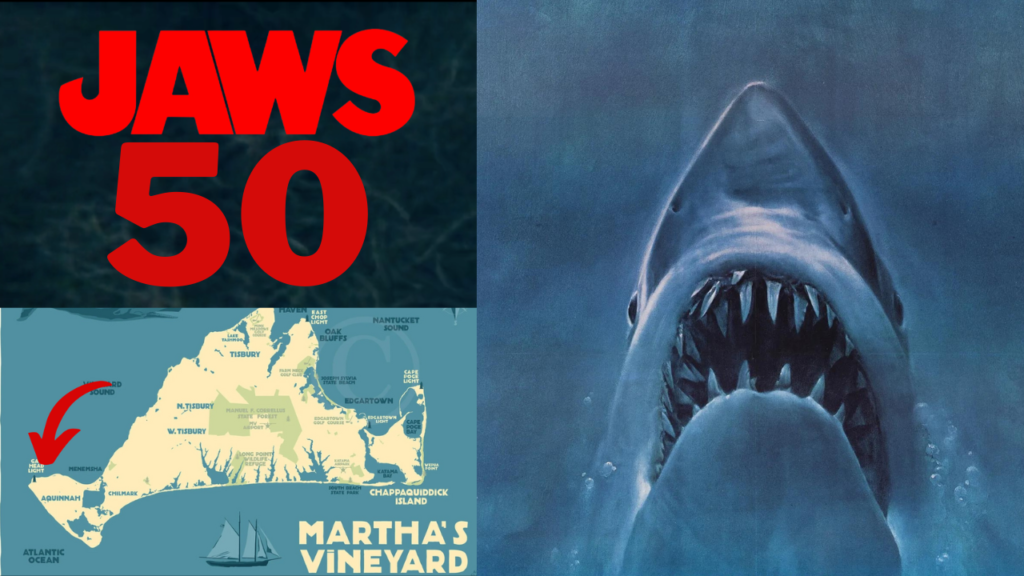
Each year during the last two weeks in June my kids and grandchildren join me on Chappaquiddick Island on Martha’s Vineyard, where as a child I spent my summers growing up. This summer was no exception.
My family gets to the Vineyard using different means. Some take flights from New York City or Boston and arrive at the Martha’s Vineyard airport, some drive their cars onto the car ferries that serve the island from Woods Hole Massachusetts, and some take passenger only ferries from locations in Rhode Island.

This year for the first time, Kelsey and I decide to get to the Vineyard by a taking our 21’ Boston Whaler from its moorage along the Hudson River in Sleepy Hollow New York.
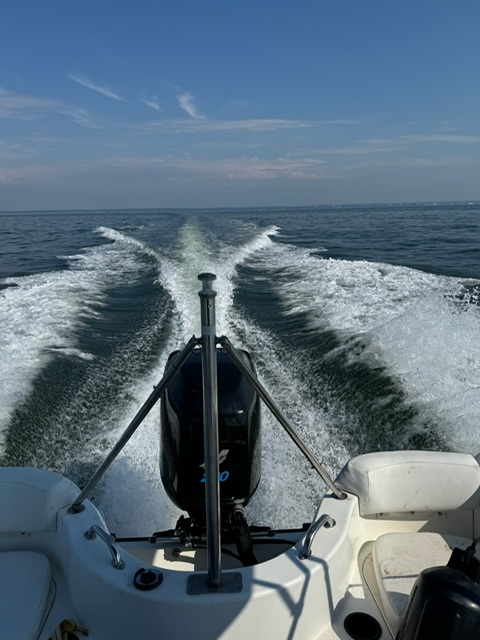
Rather than trailering the boat, we decide to motor on the waters that lie between the Hudson River and Martha’s Vineyard. We did this because we wanted to have the experience, but also to test run the 2003 boat which we had recently purchased.
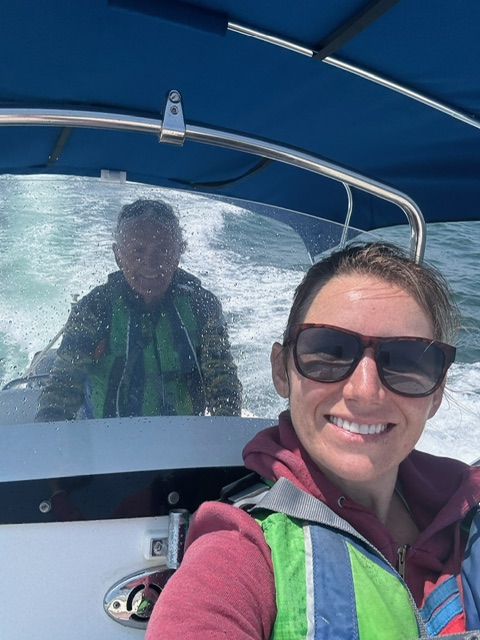
This decision to take the boat on the water was not made without being aware of the challenges that this presented. For example, we would be traversing 200 miles of water. The boat at maximum speed goes 25 knots, so the best case would be an 8-hour trip on the high seas, assuming no stops and a flat, calm sea. Not a short or small effort. Not at all.
In addition, there can be significant weather and sea issues such as tidal flows, currents, wind, wind direction, rain, etc. On top of that there are the navigational challenges of taking a water route that we have not taken before. One of the most significant navigational challenges we ran into was the danger associated with rocks near shorelines which do not appear on navigational charts or on the Garmin chart plotter on the boat.
The trip requires us to traverse several very different bodies of water. We started on the huge freshwater Hudson River, followed by the Harlem River and the East River, passing Rikers Island in the process. This stretch leads us into salt water Long Island Sound. Long Island Sound is 110 miles long, 21 miles wide at its widest point, covering 1,300 square miles and has 600 miles of coastline.
Because of some significant winds coming from the south, we chose to hug the shore of Long Island rather than Connecticut in order to try to be in the lee of the wind. We were hoping that the land mass of Long Island, the largest island in the continental United States, would somewhat shield us from the strong winds.

By following Long Island’s northern shoreline, we eventually made it to the tip of Long Island, the Manhasset and Montauk areas. At that point we had to make a choice on which route to take. One alternative route was to cross back across Long Island Sound to the southern New England coast of Rhode Island. This would allow us to hug the coastline of New England but we would be getting the brunt of the impact of the wind.
The other choice we had was that we could attempt to go directly across the Atlantic Ocean to Block Island. 30 miles of open ocean. We would be out of sight of land for much of the trip. We would be subject to whatever wind and sea conditions that we would run into.
Don’t ask me why, but we decided to go across the Ocean straight to Block Island. This appeared to be a much more direct route to Martha’s Vineyard, but we would be traversing open ocean in a flat bottom 21’ open cockpit Boston Whaler. A Boston Whaler is a wonderful boat, but it is not good in high seas since it does not have a deep V hull. It also does not have any kind of a cabin or any other protection from the elements. You are totally exposed.
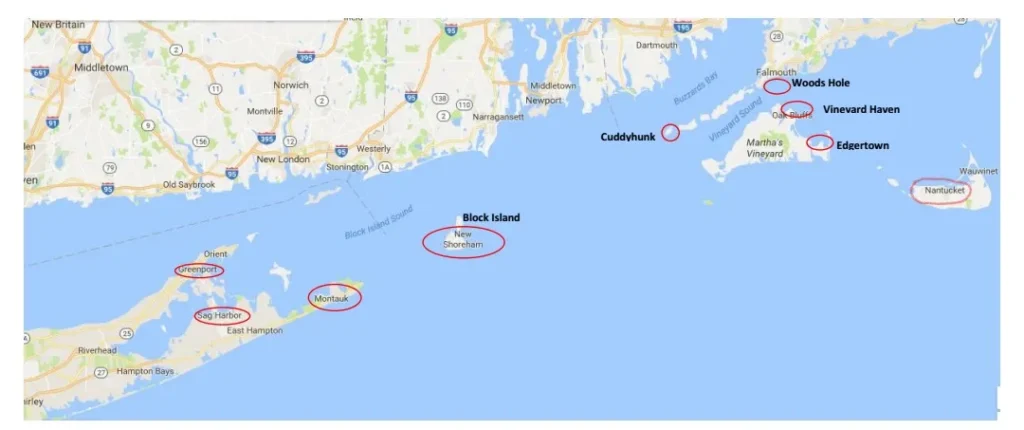
Block Island is 30 miles from the tip of Long Island. It took us 3 hours to make the crossing. We averaged 10 miles per hour. It was a rough ride. Not fun. The seas were very choppy since there were 16 knot winds. But the good news is that we made it to Block Island safely and in one piece. We stopped there to refuel, take a break and get a bite to eat.
Once at Block Island, we had no choice but to head to Martha’s Vineyard island across open ocean again. 30 more miles to reach the Vineyard. For 10 miles of the trip we were not be able to see land. The wind and the seas were unrelenting. Another rough ride. Another 3 hours on the high seas.
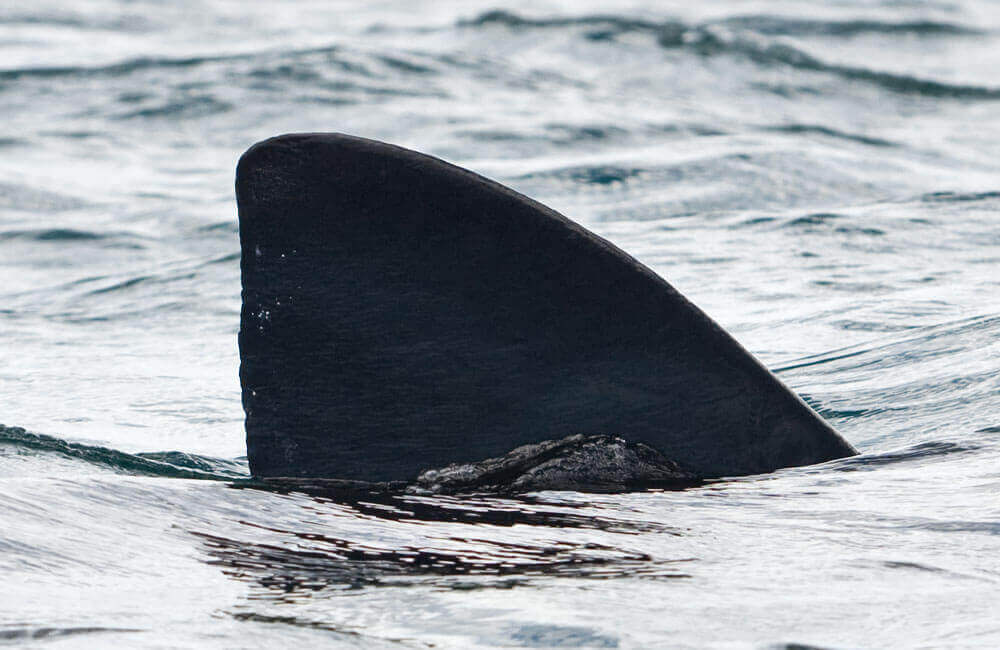
Yet something happened in the middle of our three hours that shocked us. All of a sudden, we saw large dorsal fins in the water near our boat. We saw quite a few. They quickly seemed to be approaching the boat. They began to circle the boat. My daughter got very animated and yelled out “Dad, there are sharks! Holy s***.” (play video)
She added, “Dad, don’t get too close! They are huge. They could attack the boat. Have you ever seen JAWS?”
There appeared to be 4 or 5 of them. They kept circling. It was somewhat forbidding.
I was not worried about the sharks attacking us or jumping into the boat or anything like that. No. I was more interested in exactly what we were seeing. Were they sharks? If so, what kind? Or, were they whales? Or were they dolphins? I was not sure.
The “sharks” eventually moved on, but I can tell you they sure got our attention. Our hearts were definitely beating a little faster than before. Our eyes were wide open. We felt we just had been through an unusual experience. Wow, we were saying to ourselves.
As if this experience was not enough, the same thing happened two more times during our voyage across the Atlantic Ocean from Block Island to Martha’s Vineyard.
Needless to say, the rest of the boat trip was a blur. All we could think about was what did we just experience. We had to find out what we saw. Were they sharks, or whales or dolphins? If so, what kind were they?
Kelsey had taken wonderful videos of what we saw. So, for the next several days, everywhere we went on Martha’s Vineyard and with everyone we saw we showed them the video and asked them if they knew what we saw.
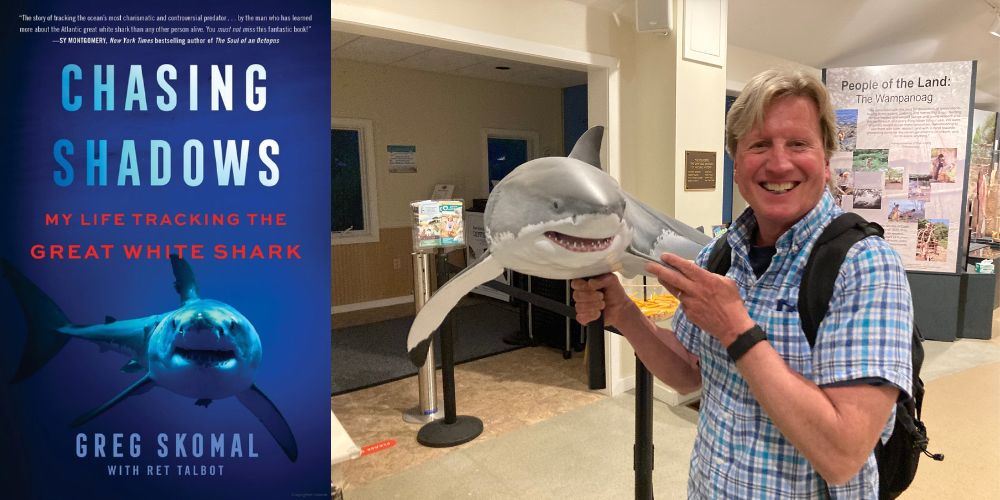
Finally, I saw a notice that there was a talk being given at the high school one night by Dr. Greg Skomal, a globally known shark expert.
I went to the talk and afterwards approached Dr. Skomal, and I asked him if he had any insight into what we had seen. I showed him our video.
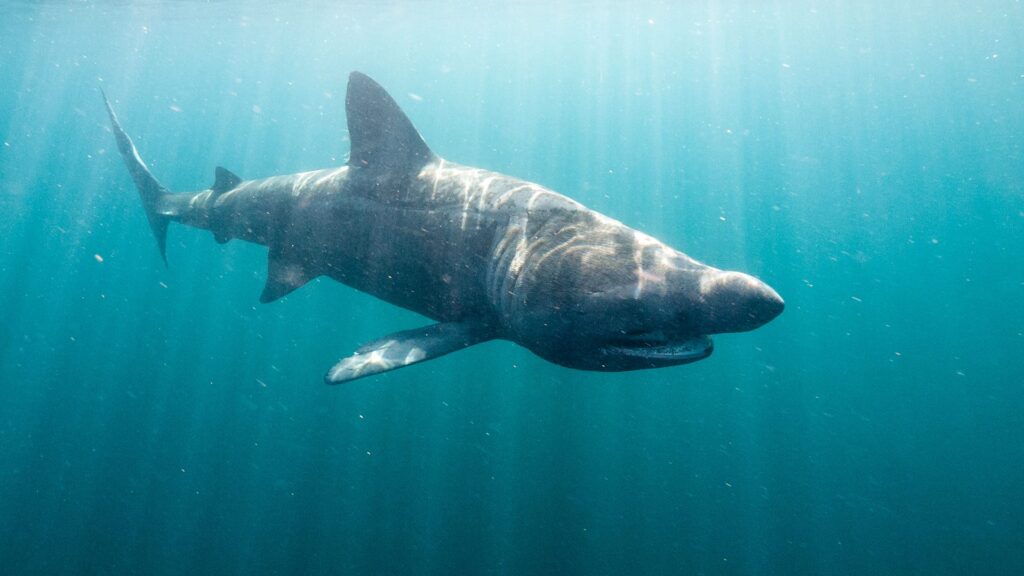
He said, immediately, without any hesitancy, that they were sharks. No question about it. And that they were Basking Sharks.
He told me that they are the second largest fish in the world, surpassed only by the whale shark. They can grow up to 40 feet in length.
Despite their large size and threatening appearance, basking sharks are not aggressive and are harmless to humans.
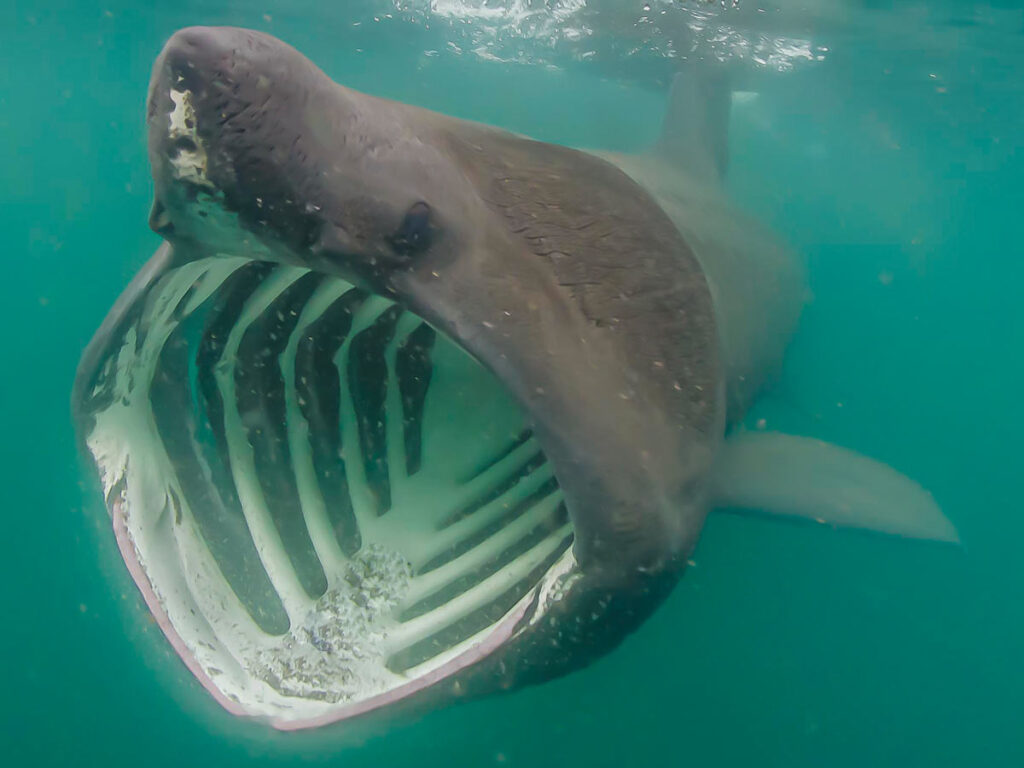
Despite their enormous size, basking sharks are filter feeders. They swim with their mouths wide open, filtering plankton, small fish, and invertebrates from the water. Their mouths are enormous – a cavernous jaw, up to 3 ft in width.
They are slow-moving sharks feeding at about 2 miles per hour and do not evade approaching boats (unlike great white sharks).
While large and slow, the basking shark can breach jump entirely out of the water. Basking sharks are highly migratory. They are known to travel long distances, moving to different areas based on the availability of plankton. They can be found in temperate waters around the world.
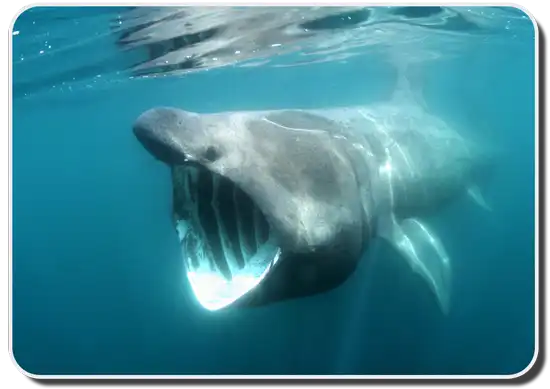
Basking sharks have a long lifespan, living up to 50 years or more.
The basking shark has long been a commercially important fish as a source of food, shark fin, animal feed, and shark liver oil. Several countries in the world have protected the species as a result of rapidly declining numbers.
Basking sharks are ovoviviparous. Ovoviviparous sharks are sharks that reproduce by hatching eggs inside their wombs and giving birth to live young. The word ovoviviparous is a new one for me. It comes from the Greek words ovum (“egg”), vivus (“alive”), and parere (“bring forth or bear”). My four years of Classical Greek in high school come in handy every once in a great while.
Little is known about the reproduction of basking sharks. They are thought to give birth to live young, and females may have long gestation periods, possibly up to three years.
Bottom line. Both Kelsey and I have learned a lot about Basking Sharks – so interesting and so fascinating.
But, more significantly, we both had our own hair-raising, eye opening JAWS experience some 50 years after its filming in the waters around Martha’s Vineyard.

So weird… just read about a Basking Shark this morning on a CNN feed:
They reported a 23 foot long Basking Shark that had a camera strapped on her/him filming a collision with a boat! Google it, I can’t give you a screenshot on this post
Fascinating, Neil! Thanks! As you may or may not know, I’m from RI and have spent time on the Vineyard.
Baze
Only Neil would get a shark escort! That would have freaked me out.
Very adventuresome slow way to get there but way safer than John Kennedy’s faster mode!
By the way, even as a land lubber, I knew right off those were not Doll Fins!
You need a bigger boat!